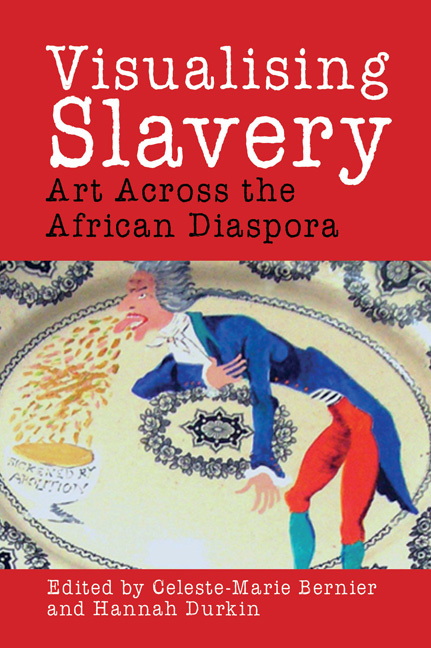Book contents
- Frontmatter
- Dedication
- Contents
- List of Illustrations
- Acknowledgements
- Introduction: ‘Inside the Invisible’: African Diasporic Artists Visualise Transatlantic Slavery
- Part I Slavery and Memory in Contemporary African Diasporic Art
- Part II Historical Iconography and Visualising Transatlantic Slavery
- Part III African Diasporic Monuments and Memorialisation
- Part IV Contemporary Legacies in African Diasporic Art
- Afterword: Against the Grain: Contingency and Found Objects
- Notes on Contributors
- Index
- Platesection
Afterword: Against the Grain: Contingency and Found Objects
- Frontmatter
- Dedication
- Contents
- List of Illustrations
- Acknowledgements
- Introduction: ‘Inside the Invisible’: African Diasporic Artists Visualise Transatlantic Slavery
- Part I Slavery and Memory in Contemporary African Diasporic Art
- Part II Historical Iconography and Visualising Transatlantic Slavery
- Part III African Diasporic Monuments and Memorialisation
- Part IV Contemporary Legacies in African Diasporic Art
- Afterword: Against the Grain: Contingency and Found Objects
- Notes on Contributors
- Index
- Platesection
Summary
The sheer marvel of the Terra Foundation for American Art-funded international symposium at the University of Oxford's Rothermere American Institute – and which has now become the catalyst of a book publication – inhered in its having been well beyond the scope of the typical academic conference. Its importance – and I would venture confidently that this was true not solely for me – was magnified by the presence and participation of artists, people who dedicate their lives, in whole or in part, to the actual making of art. The additions of their thoughtful perspectives were indeed treasures in themselves. Through their representations they reminded us that the gift most generously given is that of sight accorded to feeling – of true and genuine seeing that also affects deeply inwardly, seeing that first provokes and then commands reflection. This is a gift, an experience that is both prefatory to a politics of redemption and definitive of a pathway thereto.
I learned a very great deal from everyone, but limited space must serve in recalling what I found most striking in two plenary sessions: first, that by Hank Willis Thomas, on the morning of the opening day. Thomas, an internationally known African American conceptual artist who works most deftly and effectively at the margins of race and masculinity, offered many compelling examples of his work, but perhaps none more so than his last. This installation consists first of a full-screen image of the flag of the Confederate States of America, the symbol of Southern secessionists during the American Civil War, which remains a powerful symbol of racial and cultural contention in the United States today. In our time, its impact has never been felt more keenly than in the mid-twentieth century during the most heightened agitation for civil rights. In questioning the efficacy of the image's continuing power, however, Thomas's bold move is to digitally shatter the ‘Stars and Bars’ into various patterns of red, white and blue with every intonation of the voice of Martin Luther King, Jr. his recorded speeches. Every weighty strike of the rich and thunderous cadence for which King has long been known both demands and effects the symbol's obliteration, both harrows and unravels every shred of the bigotry woven within the nation's fabric…
- Type
- Chapter
- Information
- Visualising SlaveryArt Across the African Diaspora, pp. 274 - 279Publisher: Liverpool University PressPrint publication year: 2016



